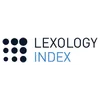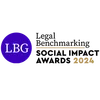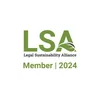Graphene is often described as the material of superlatives due to its multitude of desirable properties, which open up a myriad of different applications across many sectors. This means there are a whole host of opportunities for IP protection, which were my pleasure to discuss at the Graphene Automotive conference in Detroit, Michigan. I gave a brief presentation about trends in patenting related to graphene-based innovation with, of course, a particular focus on the automotive sector.
Here’s a reflection on some of the conference’s common themes and how they feed into an effective IP strategy for all you graphene innovators.
Compositions — graphene as a commodity #
One heavy topic of discussion was graphene as a commodity. There was a general consensus that graphene could not attain the same status as a material like copper or cobalt, since each application requires a specific graphene-based composition, which would typically comprise graphene mixed with another material.
Each new composition could well form the basis of a patentable invention if it’s found to solve a technical problem. For example, the use of graphene as part of the material used to make car seating could make the heating of the car seating more energy efficient due to graphene’s thermal properties. The composition of graphene with the material may well be known elsewhere but its specific application to car seating is actually an invention in its own right, which could be awarded patent protection if the application isn’t obvious relative to the prior art.
Each new application of a specific, well-known composition could be patentable. Patent protection should therefore be considered if innovators are applying a composition of graphene in a specific commercial sector in a way that they consider to be different from what has gone before.
Applications of graphene — filing patents early #
Alongside the ability to protect specific compositions of graphene, you may look to protect more general applications of graphene with patents. At the conference, many applications including car batteries, interiors and the ‘lightweighting’ of components were discussed, but companies active in this area are still discovering new applications (or improvements to existing ones) using graphene. In these instances, while a specific composition may be used to ultimately implement the application as a product, the underlying invention may well work (albeit sub-optimally) using a broad range of compositions which support the use of graphene being described more generally.
The general use of graphene in one application doesn’t necessarily deprive its patentability when used in another application. The use of graphene in a steering wheel could still be patented even if the same mixture has already been applied to toothbrushes.
If you’re discovering new applications for graphene, you should consider filing patent applications to protect those applications as soon as you have a working proof of concept — even if you’re not yet set on the use of a specific mixture of graphene with another material. Filing at an early stage allows you to safely disclose details of your invention, making it easier to reach out for other expertise or funding in order to develop the concept further.
Protecting processes — forming graphene layers #
The notion of a graphene layer was also frequently discussed. Ideally, a layer of graphene is a single layer of carbon atoms — but this is very difficult to realise physically and the processes for forming graphene in single layers or small numbers of layers are still challenging organisations working in the sector, particularly in commercially-sustainable volumes.
Each technical challenge you overcome in the process of forming a layer of graphene could be patentable. If you’re working to solve these problems, you should consider patent protection before publicising or seeking to commercialise your developments.
Potential risk — patent infringement #
The number of patent applications filed to protect graphene-based inventions increased dramatically following the material’s discovery at Manchester University. Many of these will now have matured into enforceable patents and will be active for some time yet. Organisations involved in the early development of graphene will have invested heavily and will be looking at any way in which they can realise income from their innovations.
Early patents will provide broad coverage and could cover your work — even if they don’t appear to explicitly relate to the specific application of concern. It’s therefore advisable to conduct a broad freedom-to-operate (FTO) search in order to dig out rights which may provide an obstacle to your objectives. Such a FTO search will not just focus on your specific product but on the specific composition you’re using and its application.
Although FTO searching can never be considered exhaustive, it will at least provide some certainty that an expensive patent infringement suit isn’t waiting around the corner. If a FTO search does uncover a problematic patent, it’s worth discussing with a patent attorney who can suggest practical options for addressing the issue. This may include technical advice as to how to work around the patent, a more aggressive approach, such as pursuing revocation proceedings through the court to knock-out the patent, or an amicable solution, such as securing a license in a specific commercial field.
Key points to take away #
It’s important to consider that new compositions, applications and processes related to graphene may each attract patent protection in their own right. If you’re developing this technology, you should keep patent protection front-of-mind as a means of securing the rights to these developments and boosting your commercial advantage.
However, the infringement risk shouldn’t be ignored. The lag time between the discovery of a new composition and the launch of a commercial product means that patents filed by early innovators and investors, eager to protect their investment in the early development of graphene, may lie in wait — a potentially costly pitfall for the unwary.
If you’re innovating using graphene and need any further advice about protecting your inventions or addressing the risk of infringing a third party patent, don’t hesitate to get in touch.





















